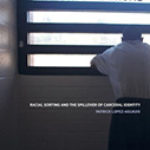Miller’s Children: Why Giving Teenage Killers A Second Chance Matters For All Of Us

Author: James Garbarino
Publisher: Oakland, CA: University of California Press, 2018. 216p.
Reviewer: Cara H. Drinan | May 2018
In recent years, the United States Supreme Court has significantly limited the extent to which children can be subject to life without parole (LWOP) sentences. In Graham v. Florida (2010), the Court relied upon the scientifically demonstrated difference between adult and adolescent brains and held that juveniles who commit non-homicide crimes can never be sentenced to LWOP. Only two years later, in Miller v. Alabama (2012), the Court held that youth can never receive LWOP sentences on a mandatory basis; the Miller decision required states to engage in a searching analysis of the juvenile’s social and developmental context before deciding whether to impose LWOP. At the same time, the Miller Court signaled that LWOP should be reserved for those “uncommon” cases where the juvenile’s act of homicide reflects truly “irreparable corruption.” In the wake of the Miller decision, approximately 2500 individuals across the country who had been sentenced to die in prison as children became eligible for a resentencing hearing.
Legal academics and practitioners have written extensively on the implications of Miller, but James Garbarino’s new book, Miller’s Children: Why Giving Teenage Killers a Second Chance Matters for All of Us, brings a new perspective to this discussion, that of a humanistic psychologist. Garbarino has written previously on adolescent violence, and in recent years he has served as a psychological expert witness in post-Miller resentencing hearings. Miller’s Children reflects the depth of his expertise and the hope he has come to have in the power of human transformation.
Garbarino begins by explaining the Supreme Court’s recent decisions in the juvenile sentencing arena. He breaks down the Court’s decisions in a reader-friendly way, while also explaining that most teenagers who commit homicide have a shared background of significant psychological trauma and damage. Chapter Two introduces the reader to five of “Miller’s Children” – adolescents who committed homicide and whom Garbarino came to know during the resentencing process. He refers to them as “five good men” (p. 31) and tells their stories with fairness and compassion. Having put a human face on the issue of juvenile homicide, Garbarino wrestles in Chapter Three with the moral issues implicated in sentencing – and now resentencing – youth who kill. He leaves no stone unturned and explores everything from international sentencing norms to the psychological benefits of forgiveness and the definition of evil. Chapters Four and Five delve into the mechanics of how youth rehabilitate themselves, through natural maturation, therapy, social support and spirituality. Garbarino should be applauded, in particular, for asking the hard question in Chapter Five of whether some teenage killers really are irredeemable and should remain in prison for life; he appears to reluctantly answer this question in the affirmative. Finally, Millers Children concludes with several specific calls for reform: developmentally appropriate sentencing decisions; a willingness for prosecutors and judges to re-examine prior decisions with humility; recognition that brain maturity extends past 18; and the need for treatment and therapy as part of confinement.
In sum, Miller’s Children offers readers a rich understanding of the psychology behind adolescent homicide, while also giving us reason to believe in the possibility of transformation and redemption for all youth.
Cara H. Drinan, Professor of Law, The Catholic University of America. Author of The War on Kids: How American Juvenile Justice Lost Its Way (Oxford University Press, 2017)


